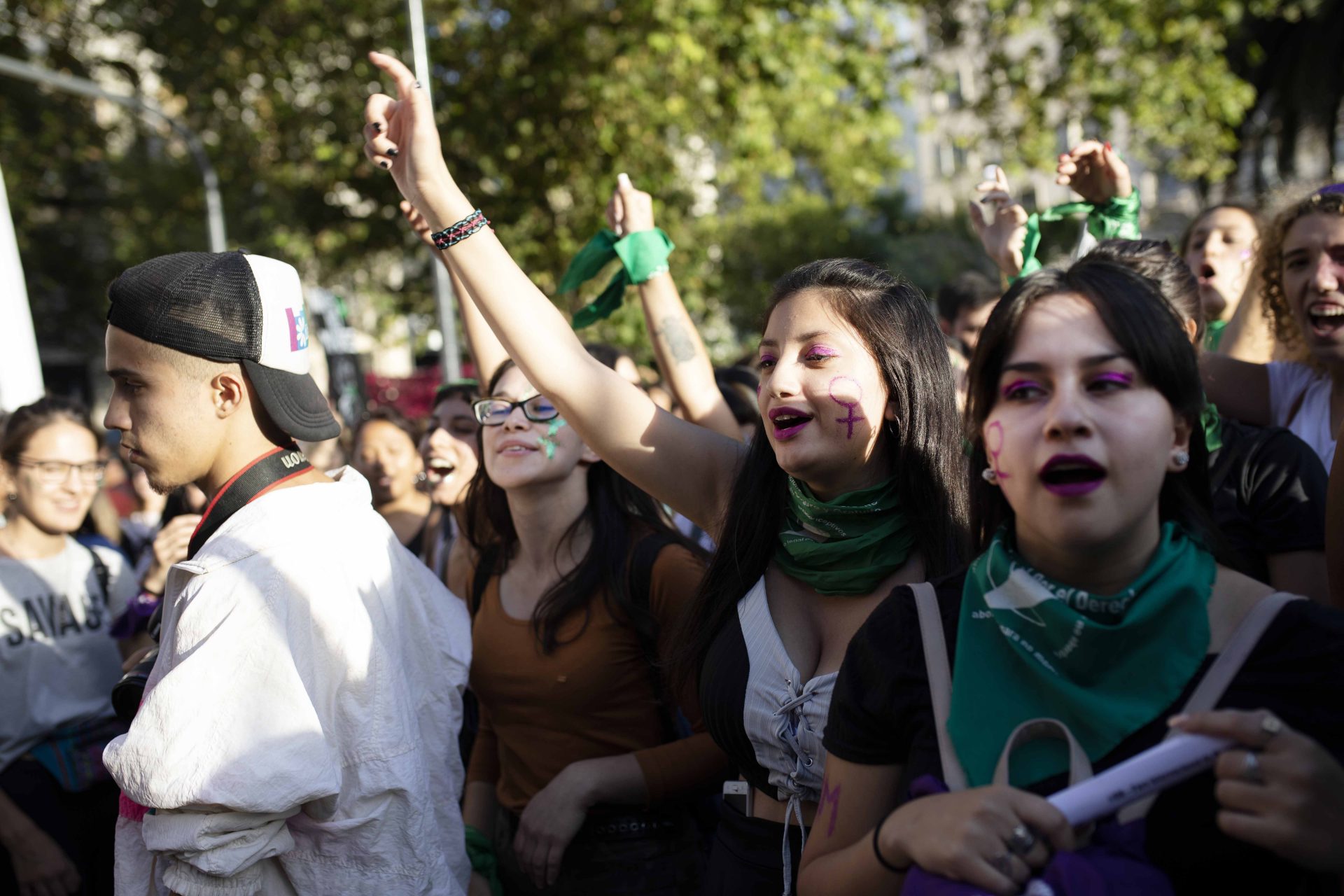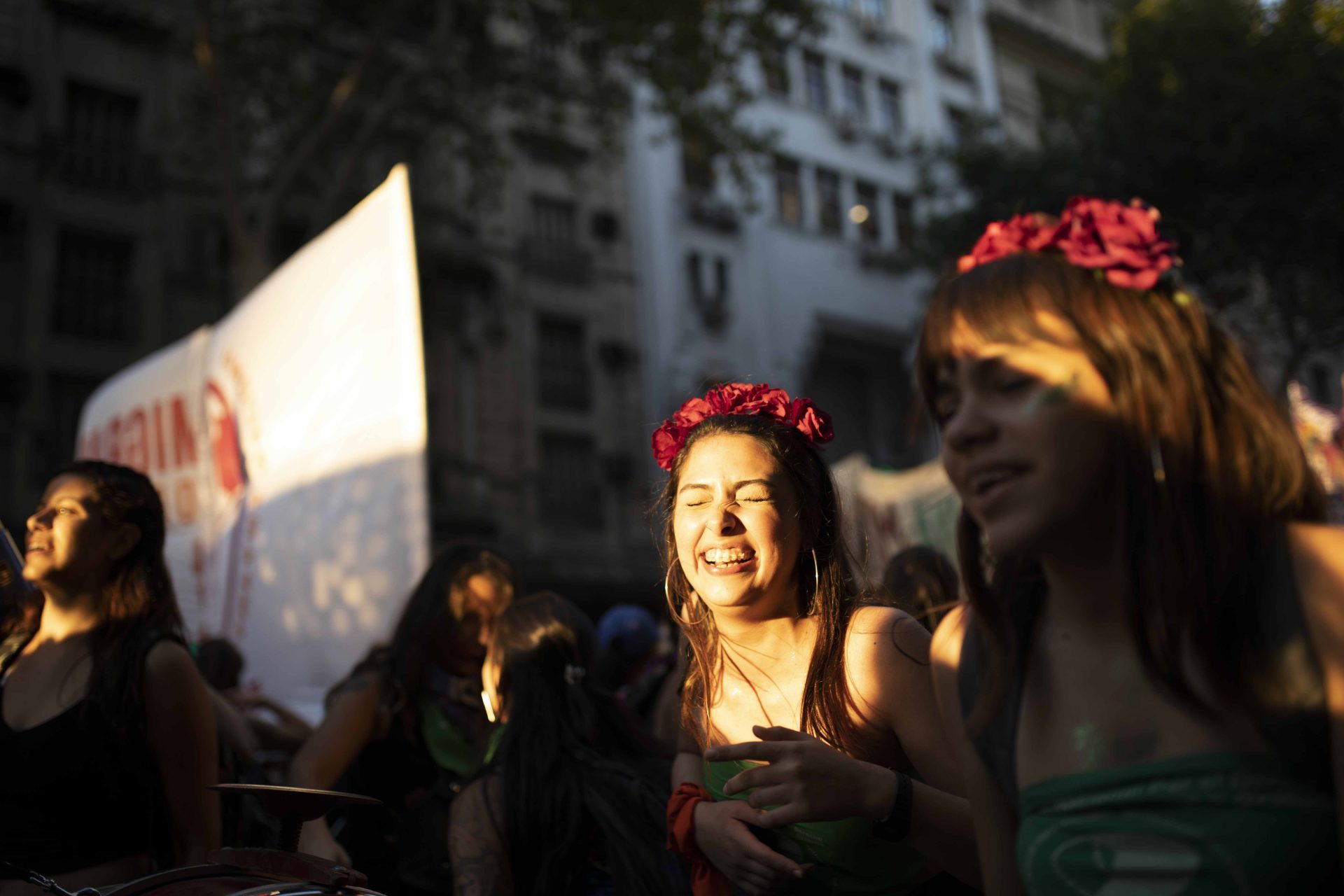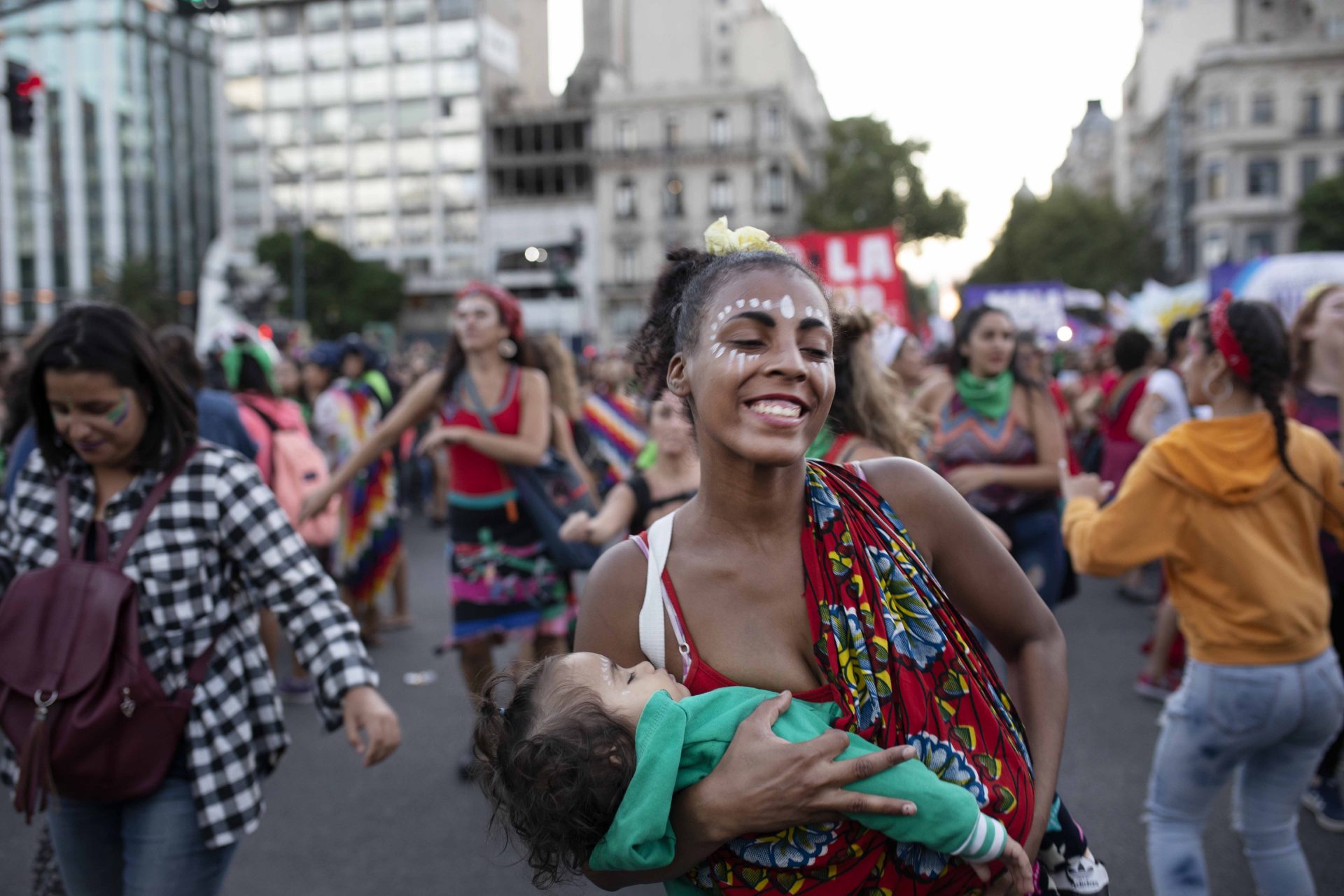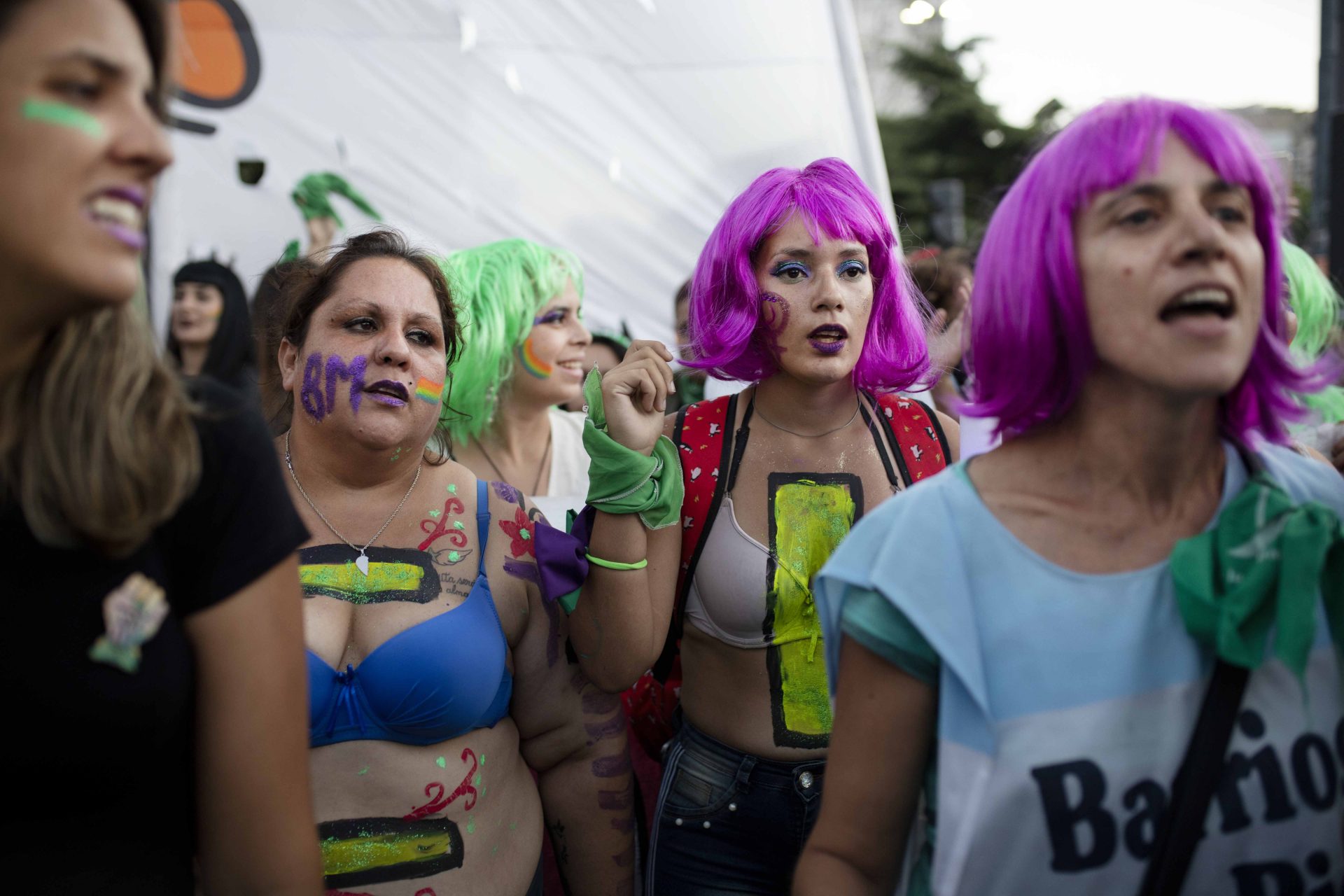
They were hundreds of thousands. Women, girls, babies, transgender. They were singing and protesting, drumming and dancing, they flood the streets. All of them pushing for action on gender equality. To stop gender violence, men from killing women, so-called femicidios. “Girls, not mothers” was one of this years most important messages, after a 11-year-old girl was raped by her grandmother’s partner and denied her right to abort (because it was rape) in Tucumán this year. Most women were painted in green or with a green handkerchiefs around their neck, a symbol of the fight for making abortion legal in Argentina. The women were protesting against the economic inequality between women and men, and for implementing sexual education in all the country’s schools. 3000 girls under 15 years become mothers in Argentina every year. Many also called for an immediate separation of the powerful catholic anti-abortion-church and the state.
The enormous parade went from the “Plaza del Congreso” to “Plaza de Mayo”. The green movement has since the beginning in June 2015, grown bigger month by month. It all started as a “NO” to femicidios, with the campaign #NiUnaMenos”, (“not one less”). Frequently the massive feminist movement gathers hundreds of thousands women in the streets all over the country. Though an abortion rights bill suffered defeat in the Senate last summer, a new bill will soon be presented to the government. Today, abortion is only allowed in Argentina when the pregnancy poses a risk to a woman’s health, or in cases of rape.
So far this year, there are registered 45 femicidios in Argentina, according to the NGO Mumala. The statistics from last year, show that a woman is killed every 30 hours by a man’s hands in the country. This means that almost 3500 children have been left without their mothers the last 10 years.
-Hilda-



